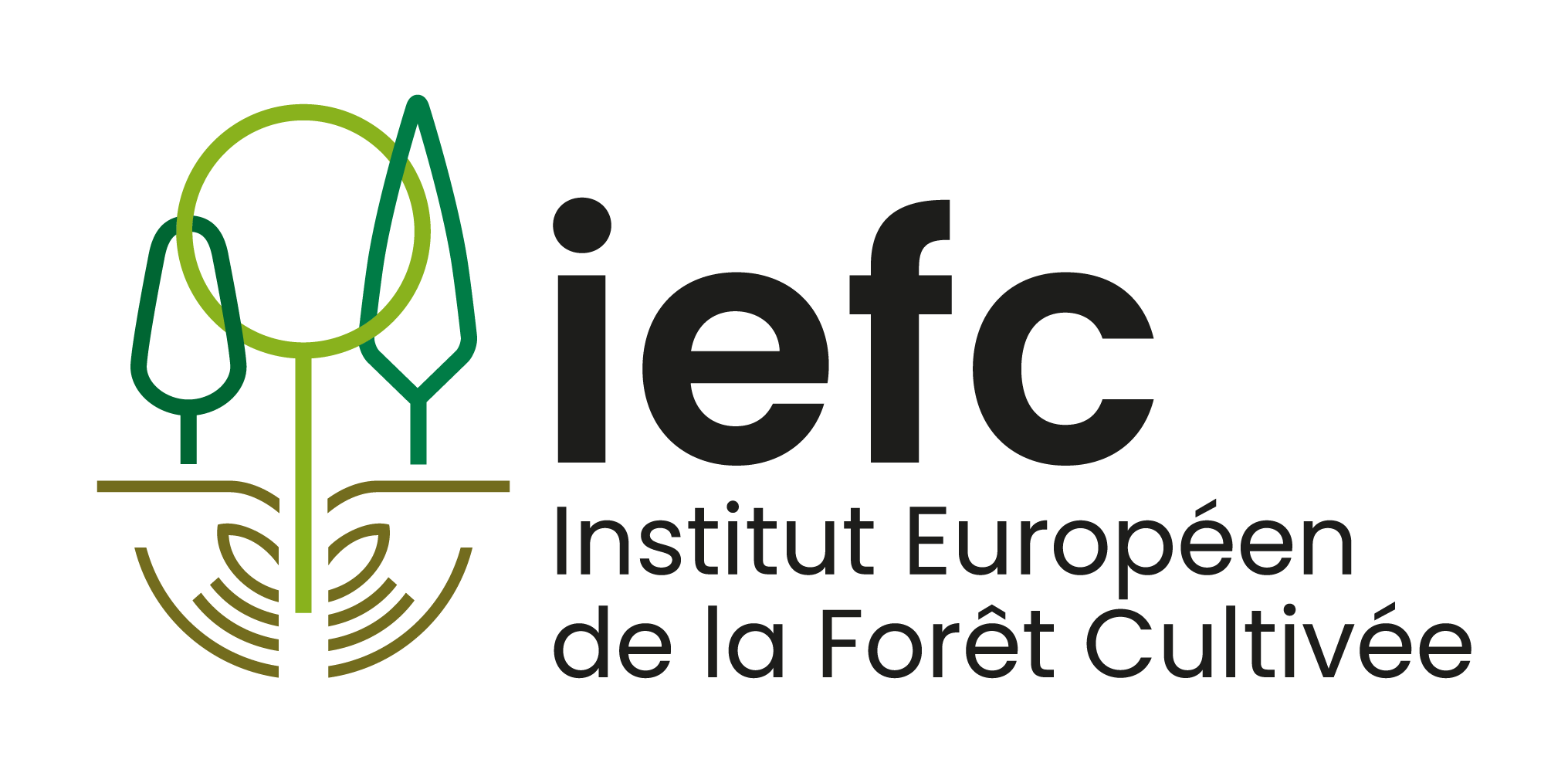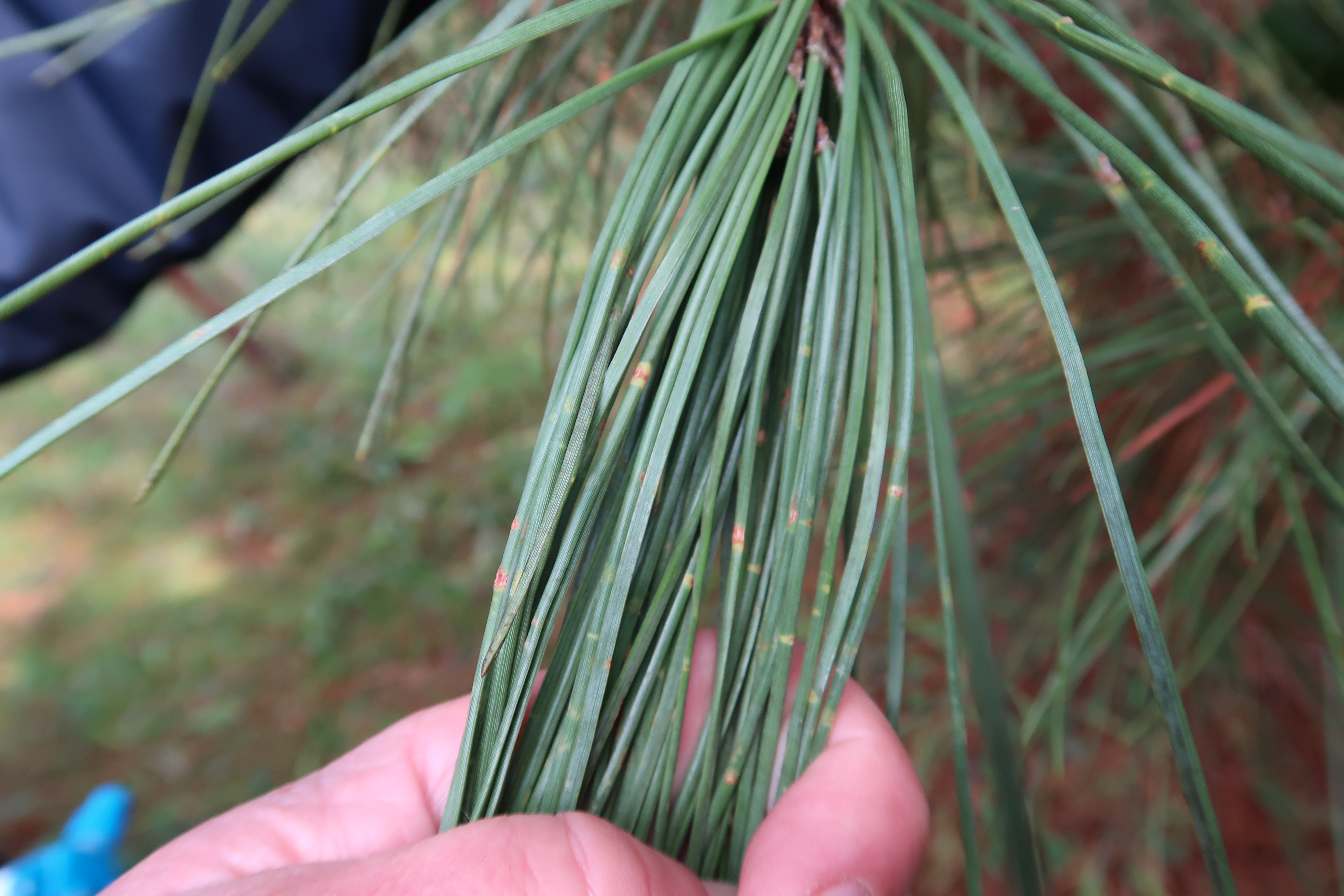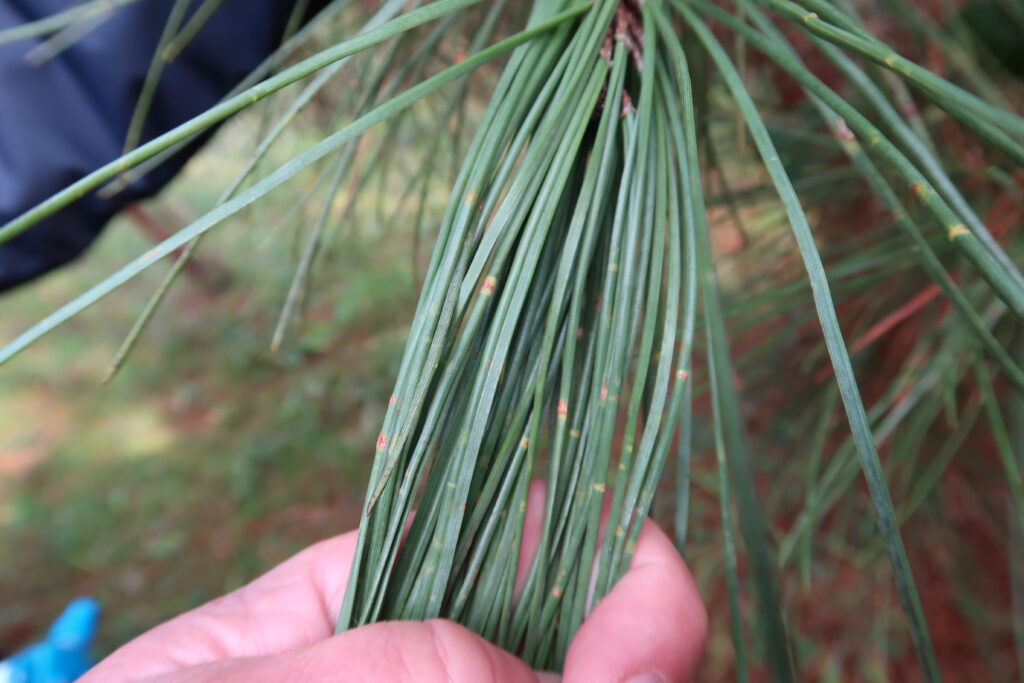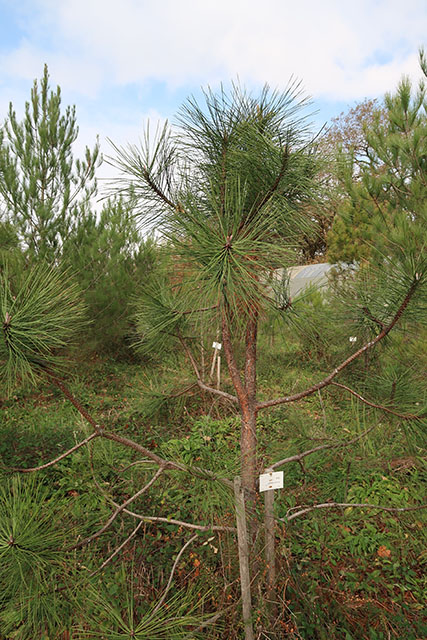Between 2011 and 2013, thanks to the REINFFORCE project of the Interreg Atlantic Area programme, a collection of 38 arboretums with different origins from 32 different forest species was established along the European Atlantic coast (from Scotland to Portugal). The aim was to observe their growth, phenology and condition that different diseases and pests might have on them in different European climates in order to understand their possible future behaviour. The idea was, in the context of climate change, to change the time variable to the space variable, being aware that the future climate in some European regions will be similar to the current climate in other regions of the continent. In the Basque Country, 5 arboretums were established: one in Albina (Araba), one in Irisasi (Gipuzkoa) and three in Unbemendi (Bizkaia). Between 2018 and 2019 there was a large outbreak of diseases caused by Lecanosticta acicola (Brown spot needle blight) and Dothistroma septosporum and D. pini (red band needle blight) in forests of radiata pine (Pinusradiata) and laricio pine (Pinus nigra) in the Basque Country. It was recently observed that some of the pines planted in the REINFFORCE arboretums in this region had symptoms of defoliation and discoloration compatible with these diseases. For this reason, between 2019 and 2020 the sensitivity to these diseases of different origins of some of the pine species planted in these arboretums was studied.
In the three arboretums, between 3 and 11 origins of the same eight species of pine trees had been established, a total of 42 origins. These were 4 origins of P. brutia Ten. (Alexandropolis, Greece; Marmaris, Turkey; Taurus, Turkey; var. Crimea), 2 origins of P.elliottii Engelm. (Georgia, USA; Louisiana, USA), 9 of P. nigra Arnold (Cazorla Alcaraz, Spain; Les Barnes Sivens, France; Sistema Iberico Meridional, Spain; Slogne Vayriéres, France; subsp. laricio var. corsican, Haute Serre seed tree orchard, France; subsp. salzmannii, Soria, Spain; subsp. laricio var. Calabrica, Les Barnes-Sivens, France; subsp. salzmannii – ES07b – Sistema Iberico Meridional, Sud de Cuenca, Spain), 7 of P. pinaster Ait. (Cordal de Loba, Spain; Leiria, Portugal; Mimizan, Landes, France; Picard, Lande Corse, France; Serrania de Cuenca, Spain; Sierra de Gredos, Spain; Tamjout, Morocco), 6 of P. pinea L. (Italy; Région méditerranéenne, France; Tietar and Alberche Valleys, Spain; Vendas Novas, Portugal; ES A – Biar – Spain; Malaga – Spain), 3 of P. ponderosa Douglas ex C. Lawson (Oregon,USA; Southern Rockies, USA; Central California, USA), 8 of P. sylvestris L. (ES10 – Sierra de Guadarrama, Spain; 5, Severozapadna, Slovakia; Turkey; Pinhal da Pedra Bela, Portugal; Scotland, UK (204); Taborz, Polland Haute Serre, French Seeds Orchard; ES12, Montes Universales, Spain; Haguenau Vayriere, France) and 3 of P. taeda L. (Hardiness Zone Georgia Seed Orchard, USA; Southern California, USA; Virginia, USA).
The trees were visually inspected in the spring of 2019-2020 for symptoms. Samples of acicles were taken and isolations were performed, where possible. Molecular analyses of both trees with symptoms and trees that did not present them were performed and PCR tests (PCR, RTPCR and sequencing) were performed to determine the presence of L. acicola, D. septospurum and D. pini. A total of 113 pines showed symptoms of the disease; 42 in Albina, 18 in Irisasi and 53 in Unbemendi.
P. ponderosa was by far the species with the most positive detections (68%) followed by P. brutia (38%), P. nigra (12%) P. elliottii (7.7%). P. pinaster, P. pinea, P. sylvestris and P. taeda had no symptoms in the three arboreta. Of the 113 trees sampled, 23 tested positive for L. acicola or D. septosporum.
Unlike previous results no more than one pathogenic species was found infecting a tree. Eugenia Iturritxa, Nebai Mesanza and Monica Hernandez report detection of Lecanosticta acicolaen Pinus brutia (Alexandropolis, Greece and var. Eldarica, Crimea), being a new host species of this pathogen on a global scale. For the first time in Spain, L. acicola was found in P. elliottii (Georgia, USA) and P. ponderosa (Central California, USA). Dothistroma septosporum was found in P. brutia (Marmaris, Turkey), P. ponderosa (Oregon, USA) P. nigra (Slogne Vayriéres, France).
REINFFORCE arboreta are valuable tools as sentinel devices for detecting species sensitivity to new pathogens as well as existing pathogens as investigated in HOMED project. In the light of these results, it is possible to start choosing the origins of species of interest in which diseases is unlikely to affect their development in different European regions.
by: Dr. Ander Arias Gonzales (NEIKER)



